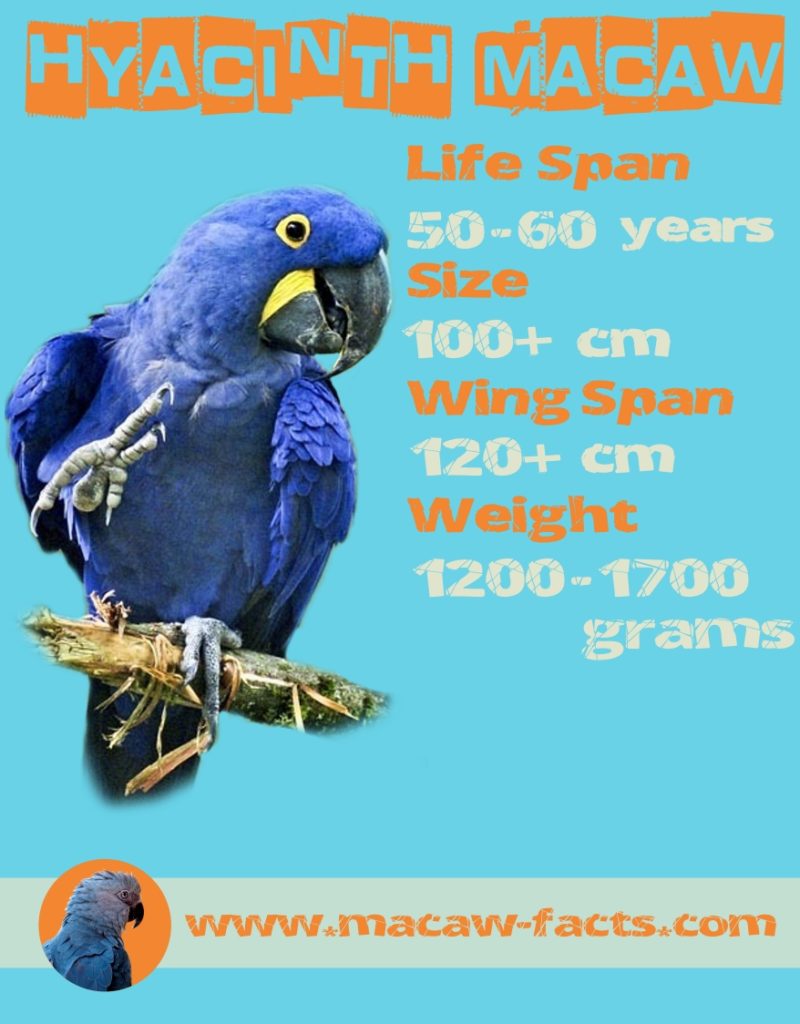The greatest parrot by length on the planet, the hyacinth macaw is 100 cm (3.3 ft) long from the tip of its tail to the most elevated purpose of its head and weighs 1.2–1.7 kg (2.6–3.7 lb).Each wing is 388–425 mm (15.3–16.7 in) long.The tail is long and pointed. Its tufts are thoroughly blue, lighter above. In any case, the neck plumes can every so often be insignificantly dim. Lifespan is from 50 to 60 years.
Here are 15 facts about the Hyacinth Macaw:
- The Hyacinth Macaw (Anodorhynchus hyacinthinus) is a large, endangered parrot native to the forests of South America.
- The Hyacinth Macaw is known for its bright blue feathers and distinctive long tail.
- The Hyacinth Macaw is the largest of the macaw species, with a wingspan of up to 4 feet.
- The Hyacinth Macaw is a social bird and is often found in pairs or small flocks in the wild.
- The Hyacinth Macaw is an omnivore, meaning it eats both plants and animals. Its diet consists of seeds, nuts, fruits, insects, and small animals such as lizards and snakes.
- The Hyacinth Macaw is known to mate for life and is very loyal to its partner.
- The Hyacinth Macaw builds large nests in tree cavities or cliffs, where it lays its eggs and raises its young.
- The Hyacinth Macaw is a vocal bird and is known to make a variety of loud calls to communicate with other members of its flock.
- The Hyacinth Macaw is an intelligent bird and is able to learn new tricks and behaviors quickly.
- The Hyacinth Macaw is a popular pet due to its striking appearance and ability to mimic human speech.
- The Hyacinth Macaw is critically endangered due to habitat loss and illegal poaching for the pet trade.
- The Hyacinth Macaw is protected by law in many countries, and efforts are underway to conserve and protect this beautiful bird.
- The Hyacinth Macaw has a lifespan of 20-50 years in the wild, and even longer in captivity.
- The Hyacinth Macaw is a popular subject in art and literature, and has been featured in films, television shows, and video games.
- The Hyacinth Macaw is the subject of a conservation and breeding program in Brazil, which aims to protect and increase the population of this endangered species.
